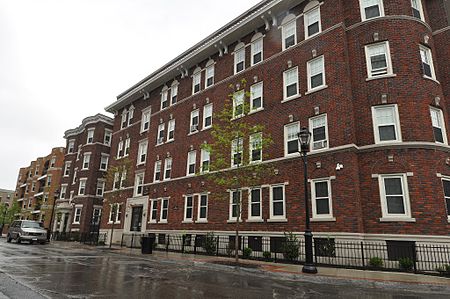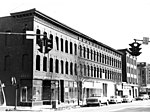Outing Park Historic District
Historic districts in Hampden County, MassachusettsHistoric districts on the National Register of Historic Places in MassachusettsNRHP infobox with nocatNational Register of Historic Places in Springfield, MassachusettsSpringfield, Massachusetts ... and 1 more
Use mdy dates from August 2023

The Outing Park Historic District, also known as Hollywood, is a residential historic district in the South End of Springfield, Massachusetts. It is a collection of 23 residential apartment blocks that were built between 1914 and 1926 by the prolific building firm, Gagnier & Angers. They occupy a relatively compact area, a few blocks along Niagara, Oswego, and Bayonne Streets, along with a few buildings on Dwight Street Extension and Saratoga Street. The district represents a distinctive and large concentration of period apartment blocks in the city, and was listed on the National Register of Historic Places in 2012.
Excerpt from the Wikipedia article Outing Park Historic District (License: CC BY-SA 3.0, Authors, Images).Outing Park Historic District
Dwight Street Extension, Springfield
Geographical coordinates (GPS) Address Nearby Places Show on map
Geographical coordinates (GPS)
| Latitude | Longitude |
|---|---|
| N 42.095833333333 ° | E -72.579722222222 ° |
Address
Dwight Street Extension 263;265;267
01105 Springfield
Massachusetts, United States
Open on Google Maps








